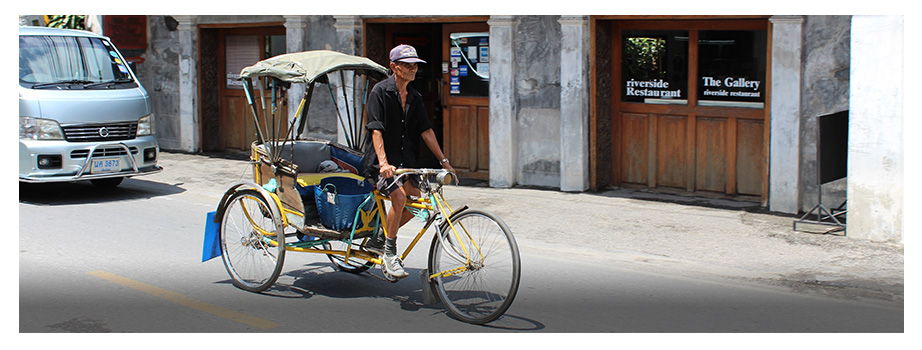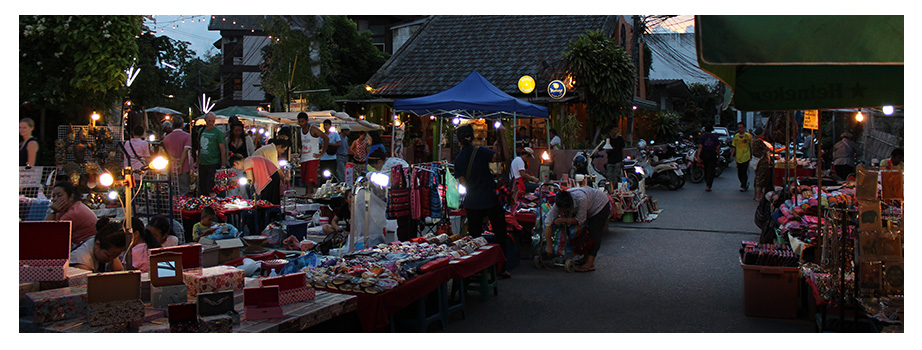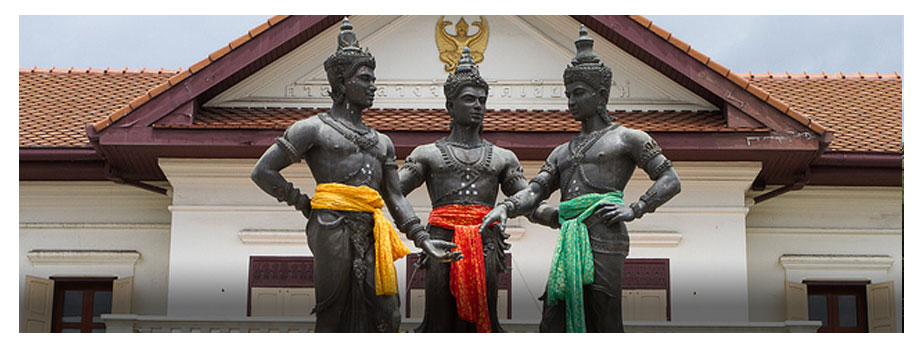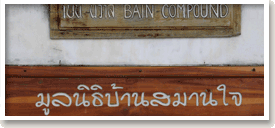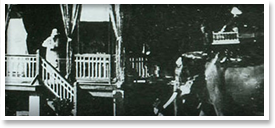



Old City Tour
1. Three Kings Monument: Sitting in the middle of a large courtyard, the Three Kings Monument has a large bronze statue of King Mengrai (the founder of Chiang Mai) and his two friends, King Ramkhamhaeng of Sukhothai and King Ngam Muang of Phayao. Three of them worked together in the late 1200’s to design and build Chiang Mai. Residents treat the monument as a shrine for the three men and replicas of it can be found throughout the city.
2. The Temple of the Fortified City (Wat Chiang Man): This temple is the oldest in Chiang Mai and was built shortly after the city’s founding in 1296. The temple has a rich history as it was built on the same spot where King Mengrai lived while he built Chiang Mai. Wat Chiang Man also houses two very important Buddha images – the marble Phra Sila and the crystal Phra Satang Man – both said to be 2,000 years old.The entire complex is a great example of Lanna architecture and Chiang Mai served as the capital during this period. The oldest building in the complex is the Sri Lankian-style Chedi called Chang Lom Chedi, which literally translates to “Tower surrounded by Elephants”. This Pagan-inspired tower is supported by 15 elephant statues, which represent a sea of unformed matter and the Chedi floating on top represents the cosmos.
3. Temple of the Lion Buddha (Wat Phra Singh): Wat Phra Singh was built in 1345 by King Phraya Phayu as a temple to house the ashes of his father King Kham Fu. Twenty two years later, a lion-style Buddha statue was brought in and it that now sits in the Sermon Hall. The statue is said to be the holiest in Chiang Mai as it came from the Mahabodhi Temple in Bodhgaya, India, where Buddha gained enlightenment. What is debatable is whether the statue is really an original or a replica. Regardless the locals deem the statue important.Apart from the Sermon Hall and the Lion Buddha, the Ho Trai Library that sits north of the courtyard in front of the Sermon Hall is also worth a visit. Ho Trai is small but full of Buddhist scriptures and very impressive with its red roof all sitting on a raised white platform.
4. Harbour of Floating Houses Gate (Tha Pae): In the heyday of Lanna Kingdom, the Tha Pae Gate was the main entrance into the city as it faced the Mae Ping River and therefore the trade routes. It was originally called the “Chiang Ruak Gate”, after the neighbourhood outside the wall, but when a river embankment was removed in the 1800’s to expand the harbour, they changed the Gate’s name to Tha Pae meaning “Harbour of the Floating House”.
5. Night Bazaar: You really can’t come to Chiang Mai without visiting the Night Bazaar. Night markets are a big part of the modern culture in most Thai cities, and Chiang Mai’s Night Bazaar may be the biggest Night Market in Thailand as it runs the down a very long stretch of Chang Klan Road. It was voted one of the Top 10 street markets in Thailand by 2013 TripAdvisor’s readers’ poll.
6. Chiang Mai City Arts & Cultural Centre: This grand early 20th century building behind the monument once housed provincial offices. Today, it is home to Chiang Mai City Arts and Cultural Centre (open 8:30 am to 5 pm, closed Mondays; admission US$2.70) with exhibits ranging from pre-Chiang Mai to modern times.

Directions to Hotel
Seven hundred kilometer northwest of Bangkok and just over 300 meters above sea level, Chiang Mai sits along the Mae Ping River, a tributary of the Chao Praya that flows through Bangkok.
Weather Forecast


